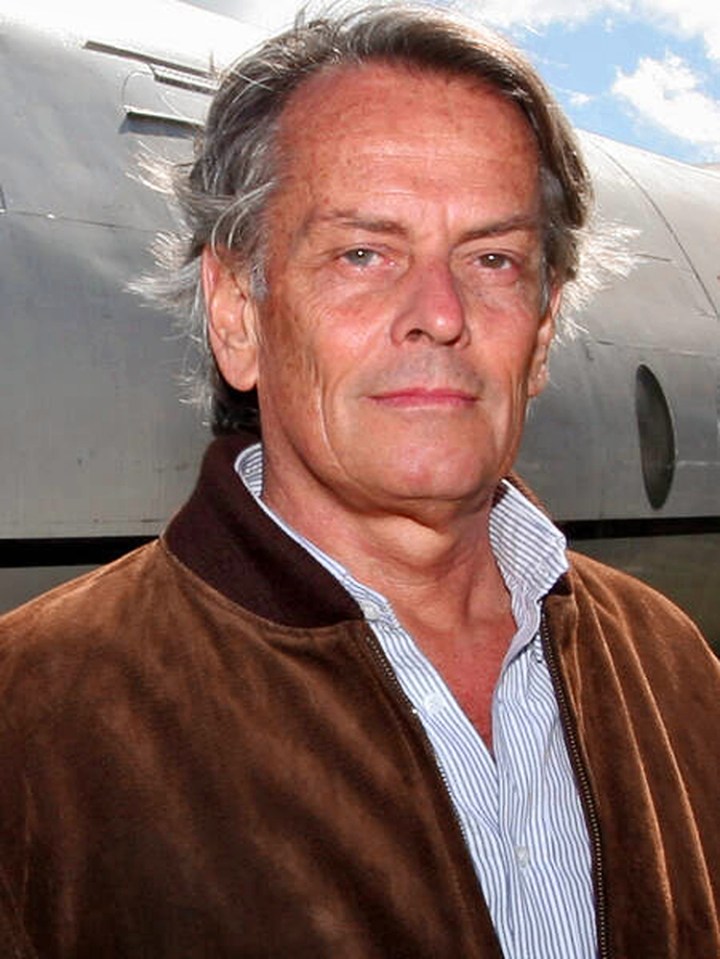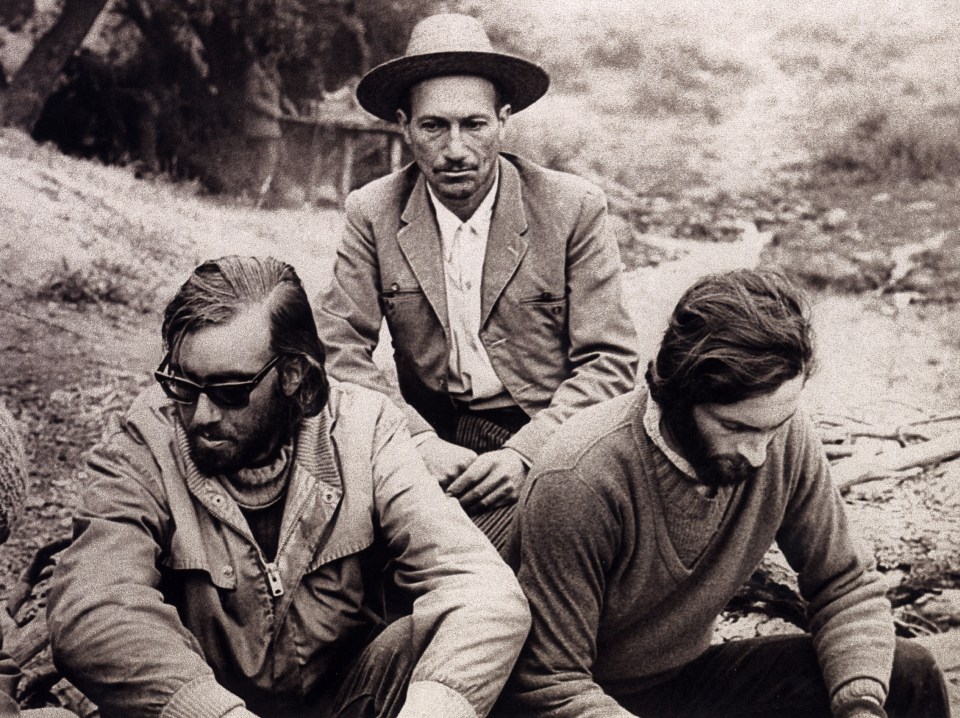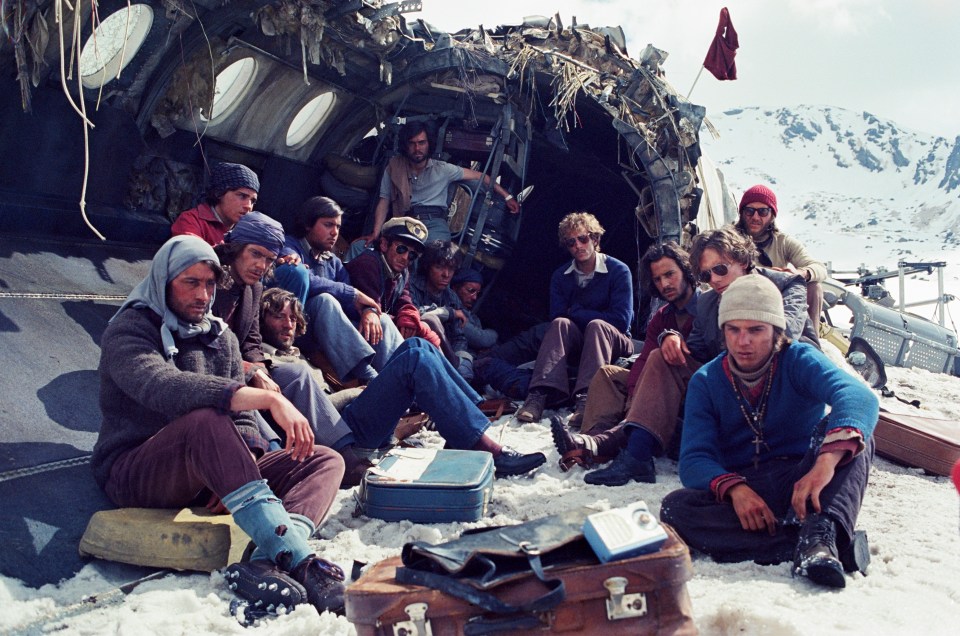BY rights hitting a snow-capped mountain at 500mph in an aeroplane should have killed Eduardo Strauch and his pals almost instantly.
Miraculously the architect escaped the crash in a remote part of the Andes in South America in 1972 relatively unscathed.
That, though, was only to be the start of a horrifying, two-and-half month ordeal, trapped 12,000ft above sea level without any food or water supplies.
The soft, deep snow which cushioned the small Uruguayan passenger aircraft’s impact proved to be Eduardo’s nemesis.
Nothing could grow in such harsh conditions, water froze up, the sun’s glare created ‘snow blindness’ and the minus 30 temperatures made a trek to find help almost impossible.
One by one 33 out of the 45 passengers and crew who had not been killed in the crash, started to die.
Read More Features
Within days the survivors grew so hungry that they attempted to eat shoes and clothes in order to fill their aching bellies.
Gradually, they discussed a food source buried in the snow that under normal circumstances no one would dare consider trying - the flesh of the dead.
In an exclusive interview Eduardo, 76, a founding member of the Old Christians rugby club that chartered the ill-fated passenger aircraft in 1972, tells how it wasn’t the taste that put him off.
Eduardo, who lost many close friends in the infamous tragedy, tells The Sun: “My mind was okay, I made all the process and I didn’t have any conscience problem at all, but my body rejected it the first time.
Most read in News TV
“It was something unconscious because of the culture and all the taboos.”
The taste was not the problem.
He continues: “It doesn’t taste, it’s like eating a piece of rice.”
It was Eduardo’s practical minded cousin Fito who was the first person willing to cut one of the dead bodies, which had been well preserved by the freezing temperatures.
Fito helped his relative to swallow the small morsel of meat.
Eduardo says: “He helped me to eat it, because it wasn’t easy the first time.”
This was day ten on the mountain in October 1972, when the meagre rations of chocolate covered peanuts and crackers had long run out.
After time he grew used to it, but they only ate a small amount just to give themselves a bit of protein.
The story of how 16 passengers defied the odds to make it off the inhospitable mountain is the subject of a new three-part Channel 5 documentary by ITN titled Andes Plane Crash.
Their battle for survival has also been told in the 1993 movie Alive, starring Ethan Hawke, and this year’s Society of the Snow.
Buried alive
Remarkably, being forced to eat flesh was not the greatest trial for Eduardo.
The darkest day was when an avalanche swept through the fuselage of the wrecked plane in which the crash survivors slept every night.
They needed to be huddled inside to protect themselves from the biting winds and minus 30 degree temperatures.
Eduardo was buried alive by the crush of snow and for the first time gave into the idea of death.
He recalls: “I was buried in the snow, I felt sure I was dead. I had this experience of dying, it was really very powerful.
“At that moment I didn’t want to get out, I wanted to die, I didn't want to suffer anymore, but within a few seconds I was struggling to survive and get out.”
His cousin helped dig him out, but eight passengers were smothered to death by the weight of the snow.
They included Eduardo’s best pal Marcelo Perez, who was the captain of the rugby union team and his partner in a fledgling architect’s studio.
He says: “Marcelo was my closest friend, but he died in the snow beside me.
"It was like an electric shock when I realised Marcelo was dead, I tried to save him, to clear the snow and ice from his face.”
No time for tears
But Eduardo was unable to mourn his loss, because slipping into depression could be fatal.
He explains: “It was very interesting how the mind works, we couldn’t get sad, we couldn’t cry.
“You couldn’t expand your energy getting sad, because that was very dangerous.”
One of the biggest battles during his 72 days in the wilderness was staying positive.
We couldn’t get sad, we couldn’t cry.
Eduardo believed he was going to be rescued.
That was difficult because on day 11 they heard on the radio that the search and rescue had been called off.
No one was expected to have survived the crash and the wreckage was too small for anyone to spot from the air.
He says: “You must have hope all the time, you need to think you’ll do it.
“It was thinking about loved ones, it was the only way you could do it. We had loved ones waiting for us. Love is what saved us.”
Dying of thirst in the snow
The mind may have said live on, but the body was telling them other things.
Eduardo says: “It was very difficult to get warm and to keep your mind sane, it was continuously a struggle with your mind, but the greatest suffering was the lack of water.
”The thirst was the most terrible physical suffering.”
Even though they were surrounded by snow it was difficult to turn it into water.
The ingenious Fito, who also created makeshift sunglasses, placed snow on a metal tray in the sun so it would melt into a bottle below.
But at night the water would soon freeze again.
It was the terrible weather which had played a major part in the crash of Uruguayan Air Force Flight 571.
The co-pilot appears to have misjudged their position due to poor visibility.
That meant the descent into Santiago in Chile started too early and by the time the captain realised they were heading towards the peaks, it was too late.
Winter storms meant that leaving the crash site in order to find help was a suicide mission.
The passengers had no climbing equipment, no tent, no sleeping bags and no way to keep warm or dry outside of the plane.
But they did manage to fashion a waterproof sleeping bag from the tail fin’s insulation and ropes.
Nando Parrado and Roberto Canessa volunteered to make the trek on December 12, because it was clear the most sickly survivors would soon die.
Eduardo could not go due to severe altitude sickness.
The sound of the helicopter engines was so magnificent, the most beautiful music
Eduardo Strauch
The two men managed to find help ten days later and helicopters were dispatched.
For Eduardo the moment he saw the rescue team was the happiest of his life.
He says: “I couldn’t stop smiling, it was the most beautiful moment of my life.
"It was a very deep happiness, we were saved.
"The sound of the helicopter engines was so magnificent, the most beautiful music.”
Remembering the dead
In 1995 Eduardo returned to the crash site to remember his lost friends and was finally able to shed his tears.
Since then he has been back another 20 times.
He says: “I need to be in the place where I had the most powerful, important, happiest, terrible and sad moments in my life.
“I need to remember my friends who couldn’t be saved.
“When I go now I can cry. I like to be on that mountain that I hated in the beginning and now I love it.”
The father-of-five knows that the experience changed the way he sees life.
Eduardo concludes: “When you are surrounded for so long by death you realise how important it is to be alive.
Read More on The Sun
“I get more value from life now than I did before the trip. I am not afraid of dying, I am just worried of not having time to do all I want to do. I enjoy every day.”
Andes Plane Crash: Terror at 30,000 Feet airs on Channel 5 this week at 10pm Tuesday 9 – Thursday January 11 and on My5

















